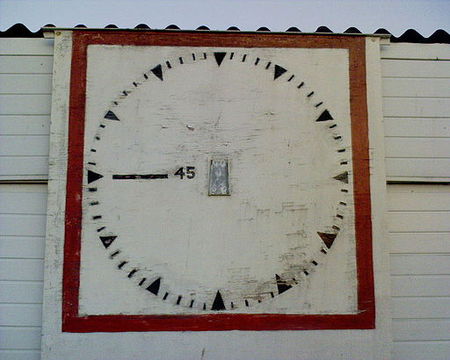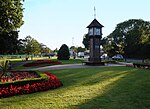Earlsmead Stadium
1934 establishments in EnglandBuildings and structures in the London Borough of HarrowFootball venues in LondonHarrow Borough F.C.History of the London Borough of Harrow ... and 4 more
Sport in the London Borough of HarrowSports venues completed in 1934Sports venues in LondonTourist attractions in the London Borough of Harrow

Earlsmead Stadium is a football stadium in Harrow, north-west London, England. It is the home ground of Harrow Borough F.C. The stadium has a capacity of 3,070 people, which includes 350 seats and standing under cover for 1,000 people. The record attendance is 3000 for an FA Cup match against local rivals Wealdstone FC in 1946.
Excerpt from the Wikipedia article Earlsmead Stadium (License: CC BY-SA 3.0, Authors, Images).Earlsmead Stadium
Arundel Drive, London South Harrow (London Borough of Harrow)
Geographical coordinates (GPS) Address Phone number Website External links Nearby Places Show on map
Geographical coordinates (GPS)
| Latitude | Longitude |
|---|---|
| N 51.5584 ° | E -0.3723 ° |
Address
Harrow Borough Football Club
Arundel Drive
HA2 8PP London, South Harrow (London Borough of Harrow)
England, United Kingdom
Open on Google Maps





